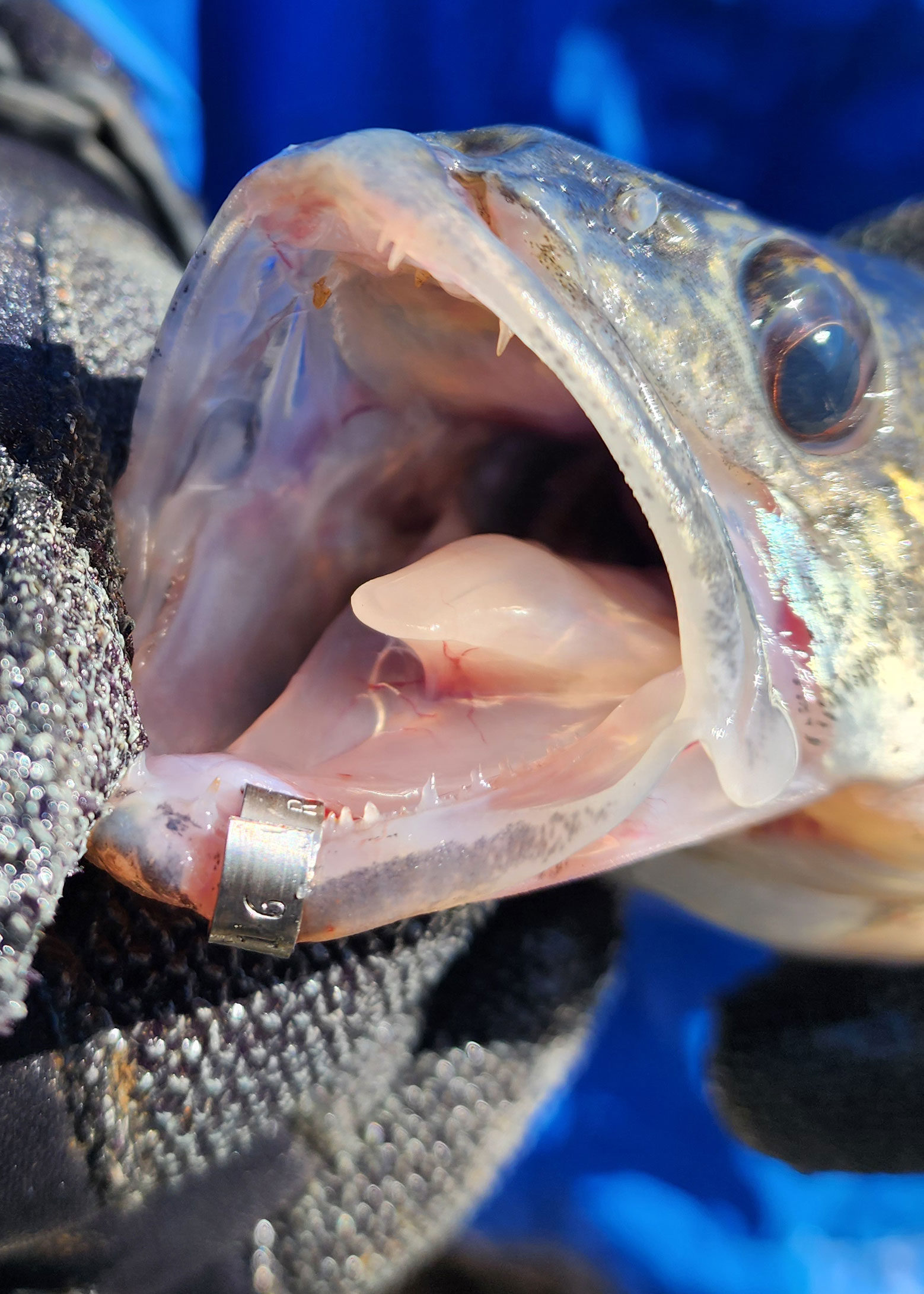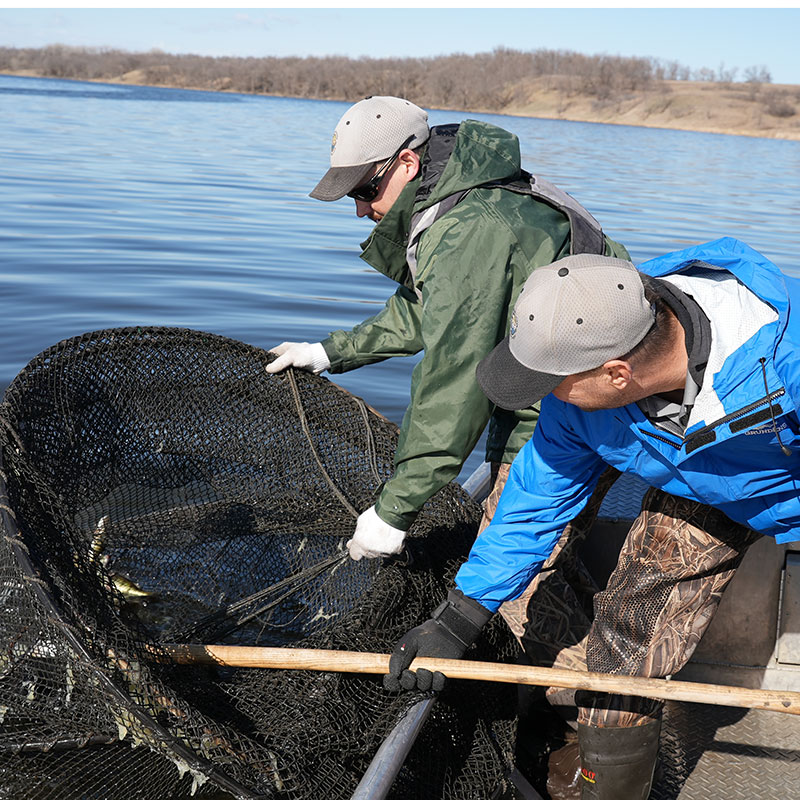Tagging for Science
Ron Wilson

Game and Fish Department fisheries personnel tagged thousands of walleyes earlier in spring in four prairie lakes across North Dakota to harvest additional insight into how anglers are utilizing these fisheries.
And if things go as planned, this effort is just getting started.
“Tagging studies are something that we typically use on a lake-by-lake basis, but this year for the first time we’re collaborating on a statewide level. This is the first year of what we expect to be doing into the future,” said Scott Gangl, Department fisheries management section leader. “This collaboration by all our staff on these multiple lakes will provide a broader picture of what’s going on around the state, not just on a lake specific basis, but on an expanded statewide basis.”
This year, walleyes were tagged on Coal Lake (McLean County), Twin Lakes (LaMoure County), Lake Coe (Eddy County) and West Lake Napoleon (Logan County).
Dave Fryda, Department fisheries supervisor in Riverdale, was heading the tagging effort earlier this spring on Coal Lake where the goal, like the other waters in the tagging study, was to put metal jaw tags in 500 to 1,000 fish.
“There’s a lot of fish up to 22-23 inches … there’s a lot of forage and the fish are in good condition,” Fryda said. “We’re fortunate the walleye in Coal have grown really well. There are several year-classes and last year they reproduced naturally on their own. This tagging study comes at a perfect time to take a look at how anglers are benefiting from this population.”
Some of what fisheries managers hope to learn from the tagging studies is an estimate of exploitation, or a better understanding of the proportion of fish that anglers harvest every year from the walleye populations.
“Our philosophy for fishing regulations across North Dakota is to keep them as simple as possible. A lot of the smaller individual lake studies have shown that our statewide regulations are appropriate for those smaller waters, meaning that we don’t have excessive exploitation. People aren’t harvesting more fish than what the lake can provide,” Gangl said. “Studies like this tell us whether fishing exploitation is high or low. And they tell us whether in some lakes we have more catch-and-release than others.”
Gangl said angler demographics across the state are diverse. For example, some areas see more nonresident traffic, while others see more local pressure.
“With that diversity of anglers across the state, we wanted to get a bigger picture and see if from one area to the other if things are consistent in terms of our fishing quality and whether our fishing regulations are appropriate to meet the needs of all of our lakes, not just some of them,” Gangl said. “Our fisheries crews will tag fish this year and then they’ll collect tag returns from anglers over the course of the next year, giving us an estimate of angler harvest and exploitation for the year. And then next year we’ll likely go in and tag fish at other lakes and based on conditions in the future.”
Spring is a busy time of year for fisheries crews. To tag from 500 to 1,000 walleyes on four lakes, nets were sunk between the season’s two biggest events — pike and walleye spawning.
“When nets were set it was pre-spawn for walleye … the fish are typically roaming the shorelines in shallower water, making them easier to catch at that time of year,” Gangl said. “Luckily, the spring that we had was pretty nice. We had an earlier ice off than last year, and the guys were able to finish northern pike spawning in a couple of days. Having that done and the perch trap and transport behind us, our crews had a little bit of extra time to get some of the walleye tagging done.”

